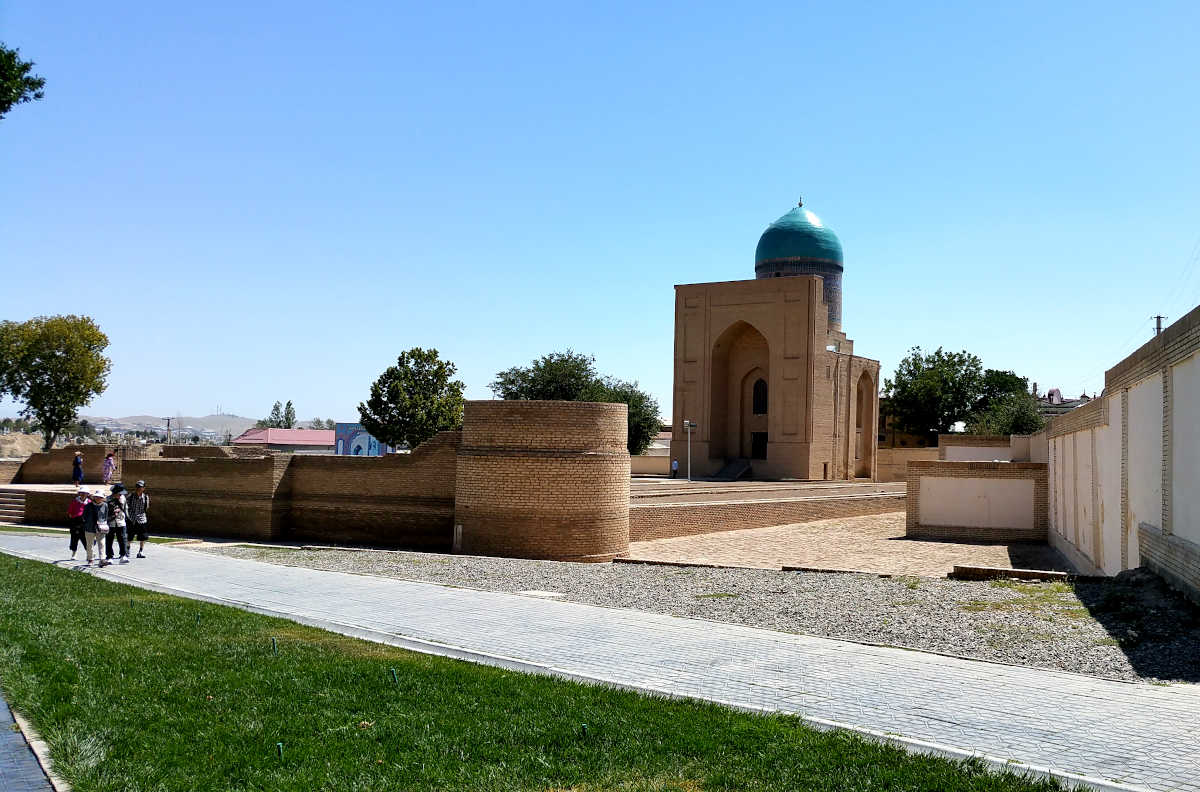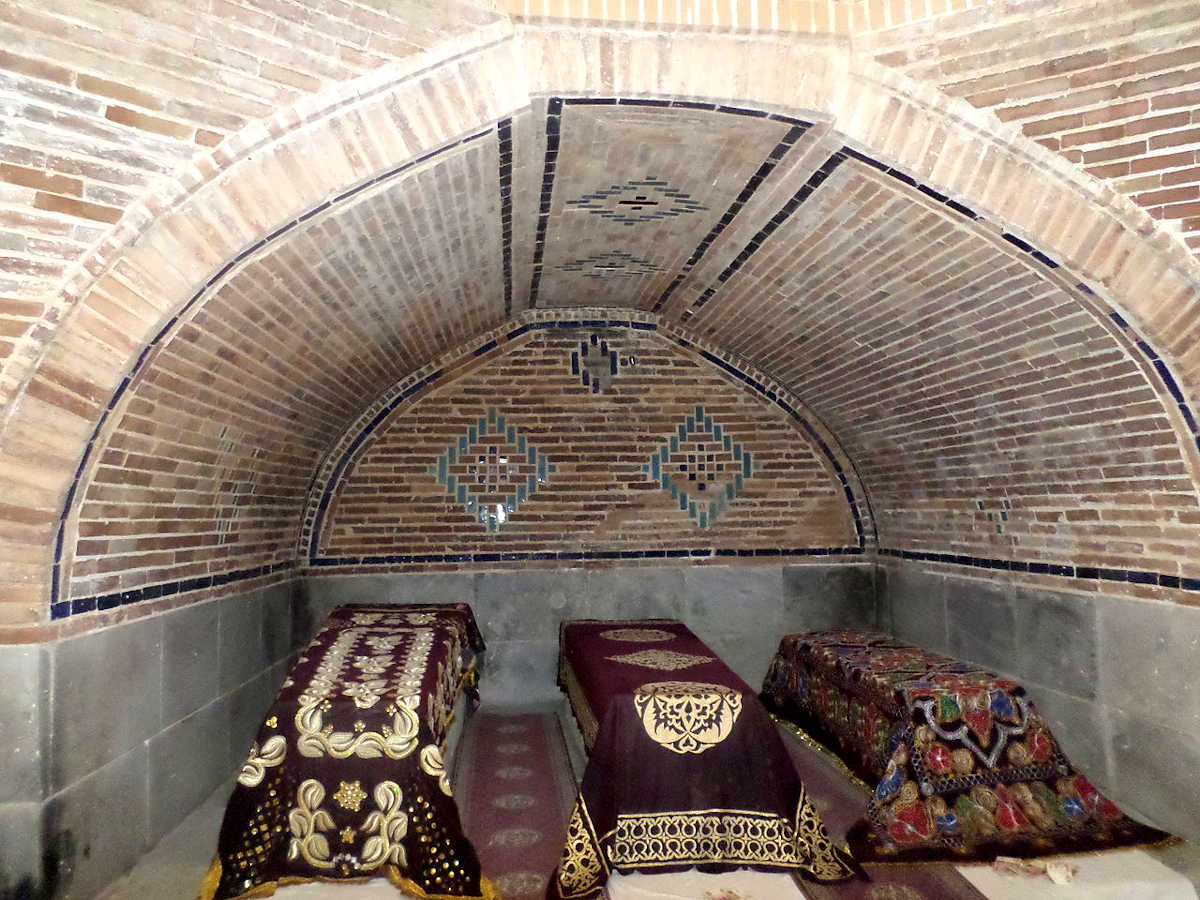Samarkand - Bibi Khanum Mausoleum
The inscription at the Bibi Khanum Mausoleum in Samarkand.
“In the Name of Allah, the Most Gracious and Merciful. There is no God but Allah, and Muhammad is his Prophet. I testify that there is no God but Allah, and I testify that Muhammad is his Servant and Messenger. There is no God but Allah, the only God who has no equal, the world belongs to him, the praise belongs to him. He gives life and takes it back. He is eternal and immortal: in the hands of his goodness he is the Lord of all things. All will return to you”.
The Bibi Khanum Mausoleum in Samarkand (beginning of XV century) located in front of the Jame Mosque of Bibi Khanum, was built in honor of his wife’s mother and was one of the first to be built in Samarkand under Temur.

The remains of an octahedral exterior and a cruciform one inside the mausoleum of Bibi-Khanym are its components. Madrasa Bibi Khanum also existed in the XVII century.
It is not clear to what extent Malikho’s words about the building of the madrasa (was destroyed by A’Bdullahan (XVI century) in such a way that “nothing of it is left except the mausoleum of Bibi Khanum”.
The Bibi-Khanum mausoleum apparently served as a burial place for women from the Temurid dynasty (it is associated like a mosque with the legendary ruler Bibi-Khanum). According to Clavijo, Bibi-Khanum’s mother was the first to be buried there.
There is no information about the burial of Bibi-Khanum itself (Sarai Mulk-Khanum), although popular tradition refers to this building as Bibi-Khanum’s mausoleum. It is a high octahedral structure with a cylindrical drum surrounded by a large Kufi inscription and an unsaved outer dome.
Inside, under the cruciform Gurkhana plan, there is a marble tomb with three female tombs in sarcophagi. The interior of the mausoleum is decorated with a mosaic panel and paintings on the plafond and walls, where ornamental motifs and stylish landscapes are presented.

In 1941 archaeological excavations of the skeleton and tombs were carried out here. In the years 1956 – 1957 the works on historical-architectural and archaeological research of monuments were carried out.
All tombstones are surrounded by a marble grid set by Ulugbek. The burial in the western part of Gur-i Emir, which was considered to be the tomb of Said Omar, should be called “the tomb of an unknown”, as the inscription on the tombstone itself emphasizes.
The upper tombstone of Temur is made of dark green nephrite, which was delivered by Ulugbek from the upper reaches of the river Ili in 1425. An Arabic inscription is carved into this stone in which it is claimed that Tamerlane is said to have descended from a common ancestor with Genghis Khan.
At the end of the inscription is the legendary tale of the immaculate testimony of one of Genghis Khan’s ancestors by a woman named Alunkuva, “who received him from the light that pierced through the mountain door and appeared before her as the image of a perfect man”, one of the descendants of Caliph Aliya.
This invented relationship with Genghis Khan was written after Temur’s death. By order of Nadir Shah, after the capture of Samarkand in 1740, the nephrite tombstone of Temur and double-winged metal gates were delivered from the mosque of Bibi-Khanum to Mashhad.
After checking them, Nadirshah ordered the stone and the gate to be returned to Samarkand and put “in its place”. The gravestones of other members of Temur’s family fill the following rooms of the building.
During the period of Soviet power from 1924, major renovation and restoration works were carried out on the territory of the mausoleum: the ceiling of the mausoleum was fixed on the lattice girders of the vault, thus removing the pressure of the tombstones on the mausoleum.
